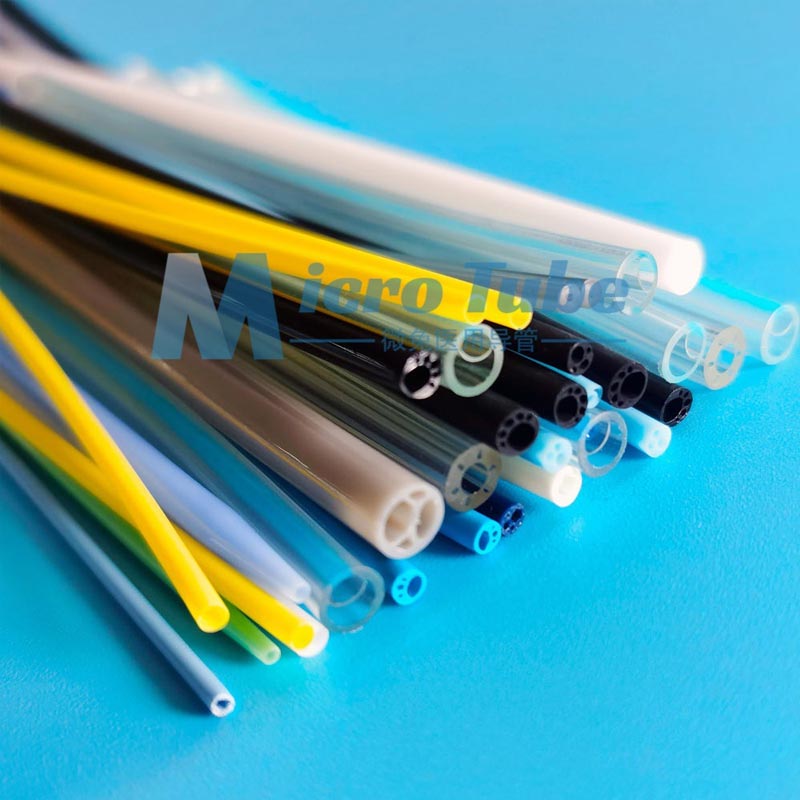What Makes Extrusion Tubing a Key Component in Modern Manufacturing?
2025-01-02
In the world of modern manufacturing, precision, efficiency, and durability are essential. Extrusion tubing, an essential product in industries such as automotive, medical, construction, and electronics, plays a pivotal role in achieving these goals. But what exactly is extrusion tubing, and why is it such an important element in many production processes? In this blog, we’ll dive into the concept of extrusion tubing, its various applications, and the benefits it offers to industries worldwide.
What is Extrusion Tubing?
Extrusion tubing is created using the extrusion process, a technique where material—often plastics, rubber, or metal alloys—is forced through a mold or die to create long, continuous shapes with a consistent cross-section. In the case of tubing, this process results in hollow tubes of various diameters, lengths, and wall thicknesses, depending on the material and application requirements.
The extrusion process begins with raw materials such as polyvinyl chloride (PVC), polyethylene (PE), nylon, or silicone, which are heated to a molten state and then pushed through a die to form the tube shape. Once extruded, the tubing is cooled and cut into the desired lengths. The result is a customizable, durable tube that can be used in a wide range of industries for various purposes.
Why is Extrusion Tubing Important in Manufacturing?
1. Versatility Across Industries
Extrusion tubing is used in nearly every industry, thanks to its incredible versatility. Some common industries that rely on extrusion tubing include:
- Automotive: For fuel lines, brake lines, wire insulation, and more.
- Medical: In devices such as catheters, IV tubing, and flexible medical hoses.
- Construction: For plumbing pipes, electrical conduit, and weatherproof seals.
- Electronics: Used in cable sheathing, wire insulation, and protective covers for electronic components.
The ability to create tubes in various materials, sizes, and specifications allows manufacturers to tailor the extrusion tubing to the exact needs of each industry. This flexibility makes it an indispensable tool in both consumer and industrial applications.
2. Cost-Effective Production
One of the biggest advantages of extrusion tubing is the cost-effectiveness of the extrusion process. Since the process creates continuous lengths of tubing with minimal waste, it can be highly efficient and economical. Manufacturers can produce large quantities of tubing in a short amount of time, making it an ideal solution for mass production.
Moreover, extrusion is a scalable process. Whether you need small quantities for a niche application or large volumes for an industrial project, extrusion tubing can be adapted to meet your needs without sacrificing cost efficiency.
3. Customizable Design
Extrusion tubing can be customized to meet precise design requirements. Manufacturers can adjust factors such as:
- Material type: From flexible to rigid, extrusion tubing can be made from various plastics, rubbers, and metals, depending on the application.
- Diameter and wall thickness: Tubing can be made to any size, ensuring a perfect fit for different systems and equipment.
- Color and texture: Custom colors and finishes can be applied to match branding, improve visibility, or enhance durability.
- Reinforcement: The tubing can be reinforced with materials like steel wires or fiberglass for added strength and durability.
This level of customization ensures that extrusion tubing meets the specific functional and aesthetic requirements of any project, allowing it to be used in a wide range of applications.
4. Strength and Durability
Extrusion tubing is often chosen for its strength and ability to withstand a variety of environmental factors. The materials used in extrusion, such as PVC, nylon, polyethylene, and silicone, offer excellent chemical resistance, abrasion resistance, and thermal stability. These properties ensure that the tubing can endure harsh conditions, including exposure to extreme temperatures, chemicals, moisture, and mechanical wear.
Additionally, some extrusion tubing can be manufactured with added features such as UV resistance for outdoor use or anti-microbial properties for medical applications. This durability makes extrusion tubing ideal for long-term, heavy-duty applications where failure is not an option.
5. Efficient and Precise Manufacturing
The extrusion process itself is known for its precision. With modern extrusion techniques, manufacturers can produce tubing with consistent dimensions and high-quality finishes. This is crucial in industries like electronics and medical devices, where precision is paramount.
The ability to maintain consistent wall thickness and diameter ensures that the tubing performs reliably and safely in its intended application. Furthermore, the extrusion process minimizes material waste, making it an environmentally friendly and efficient manufacturing method.
Applications of Extrusion Tubing
Extrusion tubing finds its place in a wide array of applications across various sectors:
- Automotive: Tubing used for fuel systems, coolant lines, wiring harnesses, and air conditioning lines.
- Medical: Flexible tubing for medical devices such as IV lines, catheters, and surgical instruments.
- Construction: Tubing for plumbing, weather sealing, and electrical conduits.
- Telecommunications: Cable insulation and protective tubing for wires and fiber optics.
- Food and Beverage: Tubing for processing and packaging, often made from food-safe materials like FDA-approved silicone.
Each application requires specific qualities in the tubing, such as flexibility, strength, chemical resistance, or temperature tolerance, all of which can be achieved through the extrusion process.
Conclusion
Extrusion tubing is a highly adaptable and efficient solution for a wide range of industries. From its cost-effectiveness and customizability to its strength and durability, extrusion tubing offers numerous benefits that make it indispensable in modern manufacturing. Whether you're looking to improve efficiency in your operations, reduce production costs, or meet specific design requirements, extrusion tubing provides the perfect balance of functionality and versatility.



